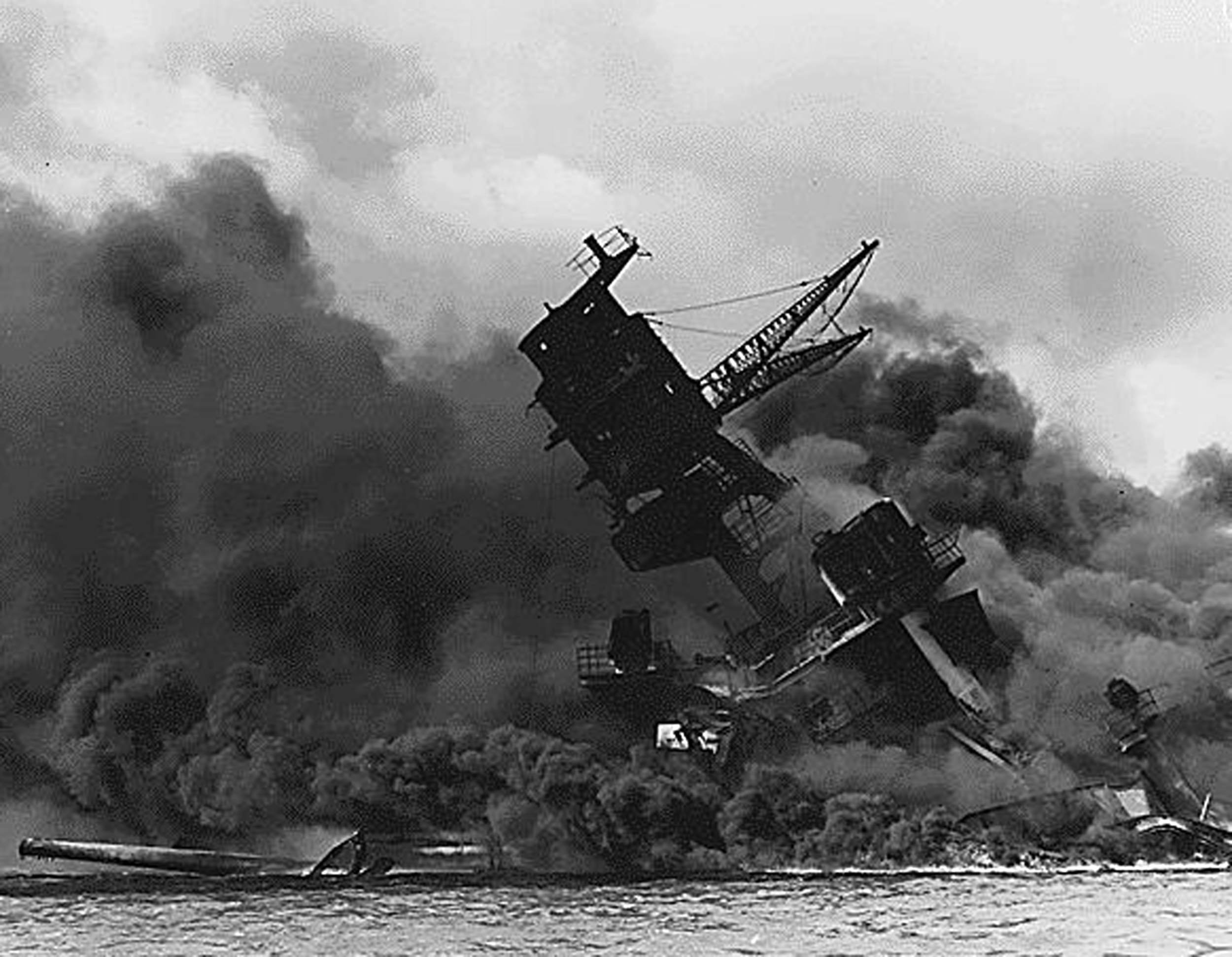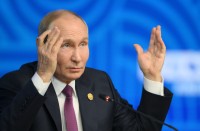
The Arizona went down entombing 1,177 crewmembers. Seventy-five years after Japan’s surprise attack on Pearl Harbor killed 2,403 Americans, a group of forensic scientists in Hawaii is still working to identify the remains of the dead. A jumble of skulls, bones and teeth deemed unidentifiable in the years following the devastating attack are now being linked to missing sailors and Marines, thanks to advances in DNA testing./ AFP PHOTO /
PARIS, France (AFP) — The December 7, 1941 Japanese attack on Pearl Harbor triggered the United States to join its European allies in World War II.
With Prime Minister Shinzo Abe due later this month to become the first Japanese leader to visit Pearl Harbor, AFP looks at the sequence of events that led to the US changing the course of the war.
Japanese expansionism
Japan’s policy of territorial expansionism, launched in the late 19th century, intensified in 1931 with its invasion of Manchuria, followed by that of vast swathes of Chinese territory.
In 1940 the Japanese empire joined the so-called Axis Powers, notably Germany and Italy, who were fighting against the Allied Powers, including Britain, France and the Soviet Union, in World War II.
Seeking energy sources and raw materials, Japan continued its policy of conquest, invading French Indochina.
In a bid to slam the breaks on Japanese expansion, the United States imposed economic sanctions on Japan in the summer of 1941, but was unwilling to enter a war that an isolationist population did not want.
The devastating attack on Pearl Harbor — the first time the United States had been attacked on its own soil since 1812 — changed all that.
“That day truly awoke a sleeping giant,” said then US Defense Secretary Leon Panetta in 2011 of the surprise Japanese assault on the US Pacific Fleet anchored in the Hawaii archipelago.
An infamous day
Prepared in the greatest secrecy, the attack on the US fleet was carried out from six Japanese aircraft carriers and their 400 aircraft, including bombers and torpedo planes, which were positioned around 350 kilometres from their target.
The objective: to wipe out the American fleet, with the broader aim of conquering South East Asia.
At 7:55 am (1755 GMT) on Sunday, December 7, 1941, the Japanese planes swooped by surprise on the little island of Oahu.
The two-hour attack killed 2,403 Americans and injured more than 1,100 others. Some 21 warships, including eight battleships, were damaged or destroyed as well as 328 fighter planes.
Of those who died, nearly half were killed in a matter of seconds aboard the giant USS Arizona battleship when a bomb detonated the ship’s munitions depot, igniting a conflagration that burned for three days.
The Japanese lost 64 men, 29 aircraft and five midget submarines in the attack.
US President Franklin D. Roosevelt denounced “a date which will live in infamy”.
America enters the War
The day after Pearl Harbor, the US Congress officially declared war on Japan, and was followed by Britain. Three days later, Germany declared war on the United States.
The US involvement changed the course of the War.
In late December, British and US leaders Winston Churchill and Roosevelt decided to pool forces against Nazi Germany under a single command.
The United States transformed into a war economy. The war fleet was rebuilt and aircraft, weapons, tanks and military transport were built on a large scale. All men between the ages of 20 and 40 were called up.
War in the Pacific
In the six months that followed Pearl Harbor, Japan continued its expansion: Hong Kong, Singapore, the Philippines, Borneo, Sumatra, Java and Burma fell in quick succession.
However, from June 1942 the United States brought a halt to the Japanese offensive, notably at the battle of Midway (part of the Hawaii archipelago), which proved the turning point in the war in the Pacific, and the later battle of Guadalcanal (in the Solomon Islands). US troops then started to reconquer the Pacific islands one by one.
Then, in late 1944, the Americans launched massive airborne attacks on Japan.
The atomic bomb attacks on the Japanese cities of Hiroshima — on August 6, 1945 — and Nagasaki three days later brought Japan to surrender and World War II ended.
Hitler’s Reich had already surrendered on May 7, 1945.
© 1994-2016 Agence France-Presse








